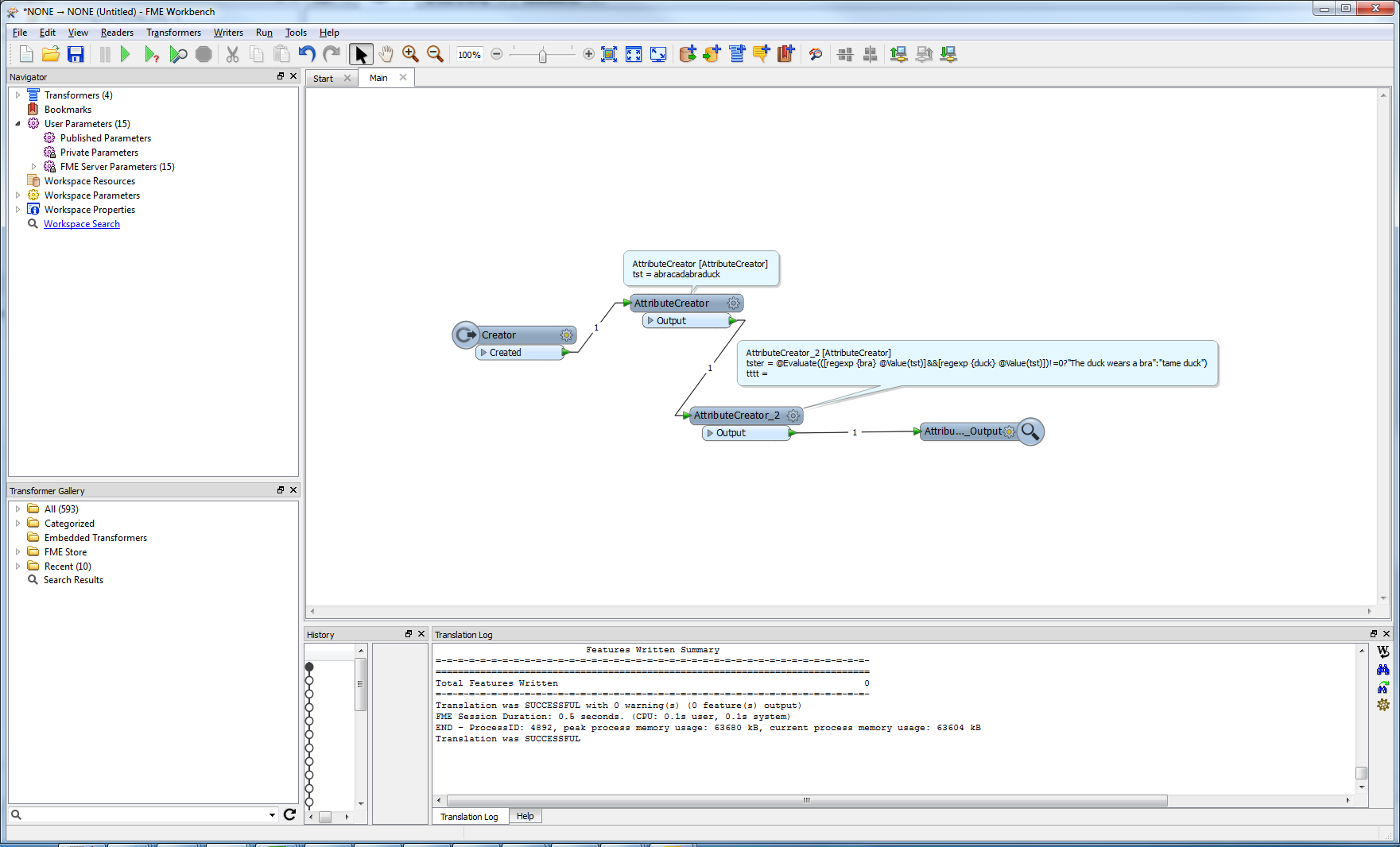I have a large number of complex features from which I need to extract a certain relationship.
I can do this via a serie of testfilters, but it is not very pretty and above all not easy to maintain.
I was wondering if it is possible to use an if then else construction in FME with python or tcl on strings.
For example:
if feature 1 has attribute x and attribute Y > result 1
if feature 1 has attribute x and attribute Y and attribute Z exists > result 2
Since my python or tcl knowledge is minimal I would appreciate any leads.
Cheers,
Itay
















